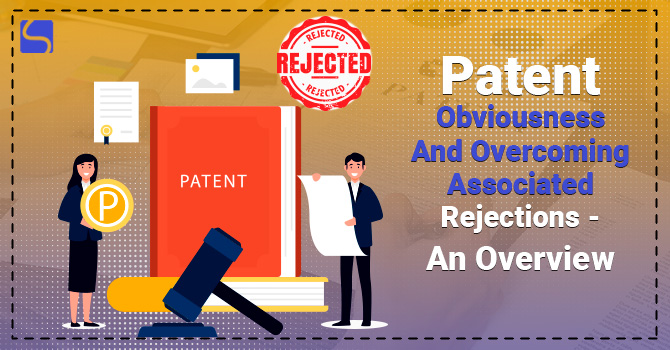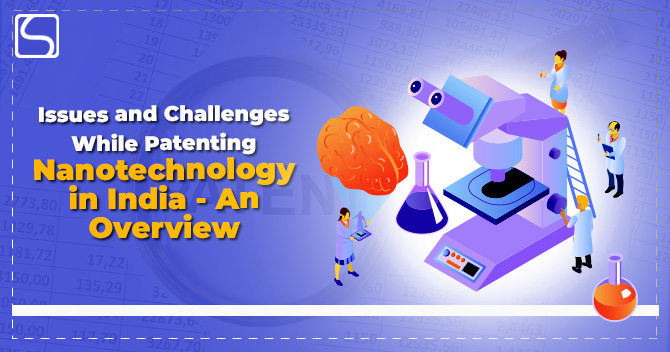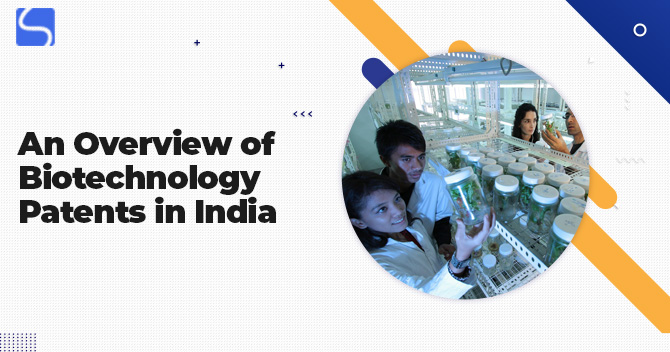Patent Obviousness and Overcoming Associated Rejections – An Overview

Karan Singh | Updated: Feb 25, 2022 | Category: Patent
Patent Obviousness is the most challenging problem to overcome while substantiating the patentability of an invention. This is due to its subjective & unclear nature. Rejection of a Patent application due to Obviousness could be a grave dissatisfaction for an inventor, whose excellent ideas are based on prior art references and the interpretations derived from them. That’s why it becomes imperative to recognise the concept of Patent Obviousness and identify ways to overcome it. Scroll down to know more about patent Obviousness and overcoming rejections associated with it.
Table of Contents
What is Patent Obviousness?
Patent Obviousness is the idea or concept that if an invention is obvious or evident to either experts or the ordinary public, it cannot be patented. Obviousness is one of the determining factors on how to Patent an idea and whether or not an invention/idea is patentable. It’s one of the hardest concepts to know since it’s often particular and even arbitrary.
One of the best examples to understand the meaning of Obviousness is the case of John Deere vs Graham; using this case, the Supreme Court came up with the Graham test for Obviousness which helps in determining Obviousness as a question of law vi factual inquiries:
To know the scope & content of prior art, the inquiry considers identical patented inventions[1]. Each is defined in the widest reasonable terms that are steady with the Patent claims. Then the invention at hand is compared with these other inventions looking for the difference. The needs a detailed investigation into the wording of claims and a look at both the invention & prior art at hand as an entire.
Why is Patent Obviousness Vital?
In most cases, Patent Obviousness is the biggest obstacle in obtaining a Patent Registration. Attorneys & judges have different views, so rulings are hard to forecast. Usually, a test for Patent Obviousness considers all prior art, comprising printed media and Patents, and tries to know whether the combination of such ideas into a new invention is obvious to an ordinary, skilled person.
The meaning of Obviousness has amended over time. 30 years ago, the Federal Circuit Court applied the teaching, motivation, and suggestion test to know Obviousness in Patent ideas. This was later abandoned in favour of 6 different criteria that define Obviousness:
- Expected outcomes;
- Applying a recognised technique to improve a device or machine;
- Designs that are obvious or clear to an individual of skill;
- The invention is created from prior art using only an additional element;
- The invention attains success from a number of finite, known solutions;
- Using a recognised technique to improve a device or machine.
What Makes an Invention Obvious or Evident?
An invention is declared or announced as obvious if the difference between the claims and the prior arts is obvious to an individual with standard skill when filing an application for Patent Registration. In short, if an invention is obvious or evident to an average person, it cannot be patented. Hence, as the idea is completely subjective, a vital part of the Patent prosecution process concerning arguing with the examiner for the invention is not apparent, and it’s not based on the prior arts mentioned by the examiner.
In many instances, it has been seen that the examiner has used a combination of prior arts to discard a claim (one or more prior art references to interpret). Furthermore, when we compare the idea of novelty with the idea of Obviousness, the subjectivity of the latter becomes even more evident or obvious.
Different ways to Overcome the Patent Rejection from Obviousness
While safeguarding the Patent application from being declined on arbitrary and unrelated bases, it’s vital to know how to tackle when such conditions arrive. The following points will aid in avoiding the obviousness rejections:
- Any unsupported belief or conclusion on only common sense by the examiner must always be challenged by arguing or disputing that the rejection is conclusory & unsupported.
- One must challenge the conclusion or ending of Obviousness by elucidating how the problem or issue was not known in the prior art/other pieces of evidence concerning the solution.
- If an examiner or scrutineer rejects the claim based on Patents or published applications, it is suggested or recommended to have a closer look at the Patent’s prosecution history. The takeaways or results from it may be used to dispute any assertion made by combining different references.
- The analysis of the examiner can also be challenged on the grounds that the prior art failed to advise any solution to the problem solved by the invention.
- Assumptions by the examiner regarding the finite number of solutions with expected success can be targeted by showing or displaying the examiner the number of choices and how uncertain the outcomes of each alternative could be.
- The randomness and variables of the Obviousness suggested by the examiner must be explained, and if possible, the unexpected outcomes can be demonstrated.
- Lastly, if the examiner still is not satisfied, amendments to the claims can be made, and precise elements that were not shared in the prior art references can be added.
Moreover, while responding to the obvious rejection, the applicant must use the arguments. Even in case, the examiner is not persuaded, the statements may be convincing on an appeal.
Conclusion
Understanding the concept of Patent Obviousness and knowing different ways to safeguard against its rejected rejections to help you protect your valuable invention from being denied unjustifiably. Further, a well-drafted application of a Patent can even lessen the occurrence of obviousness rejection in the first place itself. It aids in saving resources and getting the intended outcomes.
Read our Article:Employer – Employee Patent Ownership in India – An Overview














